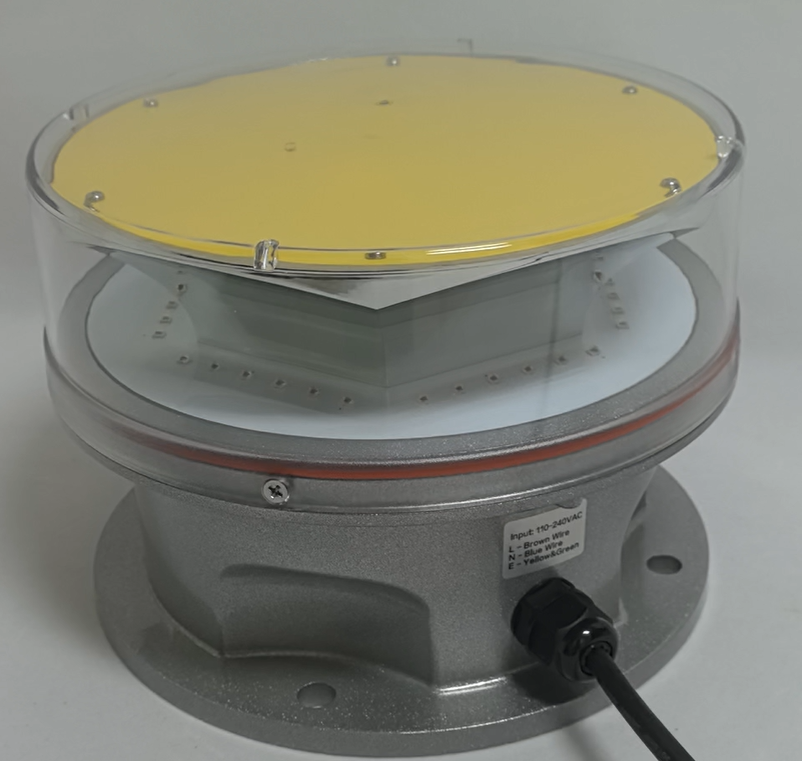Wind energy is a rapidly growing sector, contributing significantly to sustainable power generation. However, as wind turbines increase in height and number, they pose potential hazards to aviation and nearby structures. To mitigate these risks, wind turbine obstruction lighting plays a crucial role in ensuring safety. This article explores the importance, types, regulations, and technological advancements in wind turbine obstruction lighting systems.
The Importance of Wind Turbine Obstruction Lighting
Wind turbines, especially those exceeding 200 feet in height, can interfere with low-flying aircraft, including helicopters and small planes. Without proper lighting, these structures become invisible at night or in poor weather conditions, increasing collision risks. Wind turbine obstruction lighting serves as a visual warning, alerting pilots to the presence of turbines and preventing accidents.

Additionally, as wind farms expand into offshore locations, proper lighting becomes even more critical due to increased maritime and aerial traffic.
wind turbine obstruction lighting
|
Types of Wind Turbine Obstruction Lighting
Several lighting systems are employed to mark wind turbines effectively:
1. Red Obstruction Lights
Typically used at night, these steady or flashing red lights are installed at the highest points of turbines.
FAA (Federal Aviation Administration) and ICAO (International Civil Aviation Organization) regulations often mandate their use for structures above certain heights.
2. White Strobe Lights
High-intensity white strobes provide enhanced visibility during the day and in low-visibility conditions.
Some systems combine red lights at night with white strobes during the day for optimal effectiveness.
3. Medium-Intensity Lighting
Used for mid-range visibility, these lights balance brightness and energy efficiency.
Often employed in areas where high-intensity lighting is unnecessary but basic obstruction marking is required.
4. Dual-Lighting Systems
Modern turbines increasingly use adaptive lighting that adjusts based on ambient conditions.
Sensors detect daylight, weather, and aircraft proximity, activating lights only when needed to reduce light pollution.
Regulations and Compliance
Various international and national authorities enforce guidelines for wind turbine obstruction lighting:
FAA (USA): Requires lighting for structures taller than 200 feet above ground level (AGL). Specifications include light intensity, flash patterns, and color.
wind turbine obstruction lighting system
|
ICAO (Global): Sets international standards, ensuring uniformity in aviation safety measures.
European Aviation Safety Agency (EASA): Mandates specific lighting configurations for wind farms in Europe.
Non-compliance can result in penalties and increased liability in case of accidents. Therefore, wind farm operators must ensure their lighting systems meet all regulatory requirements.
Technological Advancements in Wind Turbine Obstruction Lighting
Innovations are making wind turbine obstruction lighting more efficient and environmentally friendly:
1. Radar-Activated Lighting
Systems now integrate radar to detect approaching aircraft, activating lights only when necessary.
Reduces light pollution and energy consumption compared to continuous lighting.
2. LED Technology
LEDs are replacing traditional incandescent and halogen lights due to their longevity, lower power consumption, and brighter output.
They require less maintenance, reducing operational costs for wind farm operators.
3. Smart Monitoring Systems
Remote monitoring allows real-time diagnostics of lighting systems, ensuring they function correctly.
Automated alerts notify operators of failures, enabling quick repairs.
4. Reduced Light Pollution Solutions
New lighting designs minimize skyglow, addressing concerns from nearby communities and wildlife.
Directional lighting focuses beams where needed rather than dispersing light unnecessarily.
Challenges and Future Trends
Despite advancements, challenges remain:
Wildlife Impact: Some studies suggest that certain lighting may affect bird migration. Research is ongoing to develop bird-friendly lighting solutions.
Community Concerns: Residents near wind farms often complain about light pollution. Adaptive lighting helps mitigate these issues.
Future trends include:
Solar-Powered Lights: Reducing dependency on grid power.
AI-Based Systems: Using machine learning to optimize lighting based on real-time data.
Improved Durability: Developing lights that withstand extreme weather conditions, especially in offshore installations.
Wind turbine obstruction lighting is a vital component of wind energy infrastructure, ensuring aviation safety while supporting sustainable energy growth. With evolving technologies and stricter regulations, modern lighting systems are becoming smarter, more efficient, and less intrusive. As the wind energy sector expands, continued innovation in wind turbine obstruction lighting will play a key role in balancing safety, efficiency, and environmental considerations.

